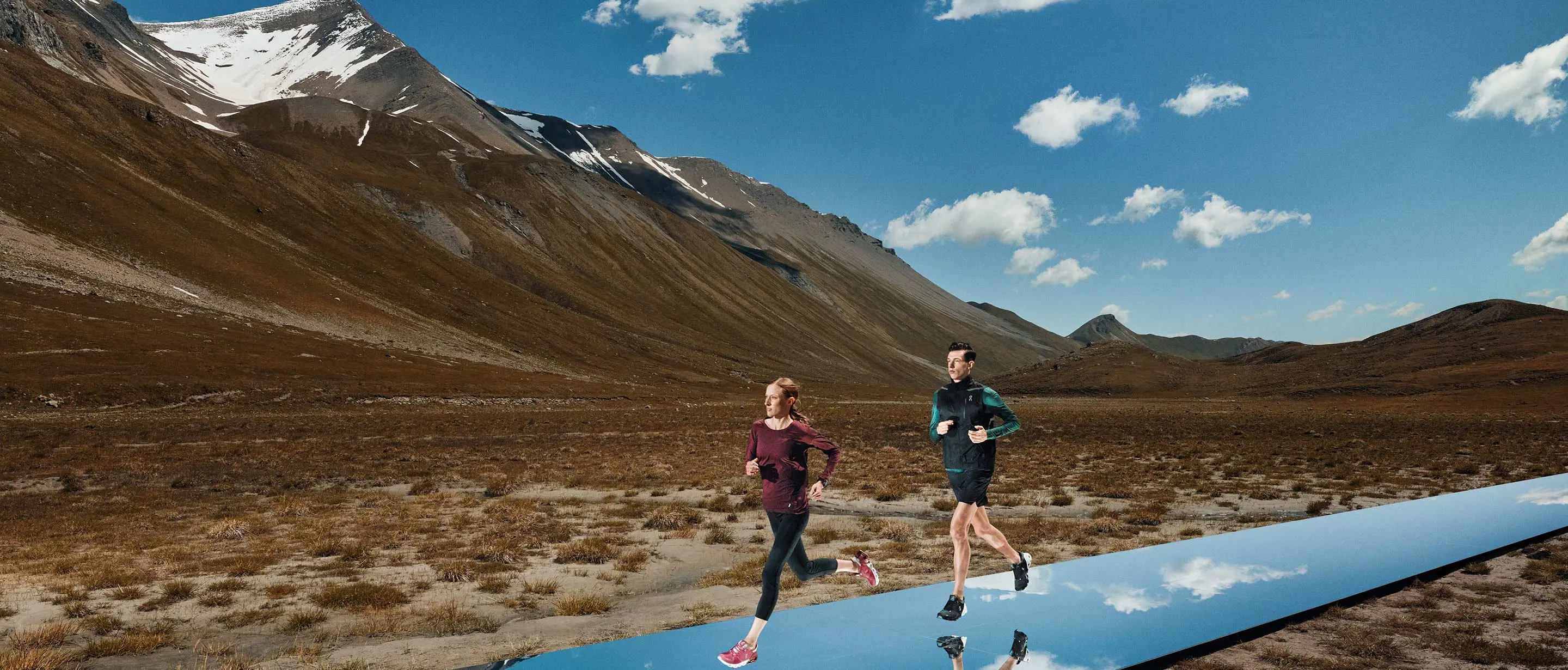

Every runner needs extra support sometimes. Whether you’re just starting out, looking to increase the distance or preparing for competition, a shoe with additional support and cushioning will help. Get all the information you need in our complete guide.
The right support shoes are among the most useful tools any runner can have, whether you’re new to the sport or a professional competitor. But they’re also one of the most misunderstood. In this guide, we debunk some myths and give you the information you need to find the stability shoe to support your goals.
To appreciate the benefits of a support shoe, we first have to understand how the foot moves as we run. As it strikes the ground, the foot goes through an almost side-to-side rolling motion. This is known as pronation and is a natural, and important part of running biomechanics. In a way, it is the body’s own cushioning and propulsion system, stretching the tendons of the foot inward as impact is absorbed before they contract again to power you forward.
Though this movement is entirely natural, it is not passive – the muscles of the foot must work to prevent the foot from rolling too far inwards too quickly. If these muscles are not well trained, or are tired from intensive or long-distance training, their ability to maintain the rolling motion is diminished. This can lead not only to a reduction in performance, but also injury. Although the brain is sending the right signals to the muscles, tired muscles can’t respond to play their role in the roll in the same way. This is where a support shoe is your foot’s best friend.
In the On range of support shoes, the individual Cloud elements under the arch of the foot feature larger cavities than those on the outside. This slows, but does not stop, the pronation of the foot, giving tired muscles the time they need to respond and support your natural rolling motion. This means you can safely run longer and strengthen your feet in the process. Other elements, from specially engineered lacing systems to a wider Speedboard® design further add support.
While On shoes are engineered to support a full range of motion, it’s worth noting that many other support shoes on the market work by stopping, rather than slowing the natural motion of the foot. By using a ‘post’ – a solid support under the arch, pronation is physically blocked. While this solves the problem of too much inward rotation, it prevents the muscles from working at all. Not only does this mean the weakness in the foot is not being improved over time, but as the muscles are taken out of the game altogether, they actually get weaker.
This question should perhaps be “who doesn’t need a support shoe for running.” Every runner, neutral runners included, can benefit from added stability in many circumstances.
It’s a common myth that support shoes are only for those new to the sport or non-competitive runners. In fact, many pro athletes run the majority of their training volume in a shoe with added stability. Josh Izewski, an elite long-distance specialist from the On ZAP Endurance Team, is happy to challenge any implication that support means slow:
All of us can benefit from including a support shoe in our running rotation, but support shoes are particularly effective for:
When you’re just starting out, your muscles will benefit from support as they adapt and grow to handle the demands of regular running.
If you’ve been out of action for a while, a shoe with added stability will give your muscles the support they need to gradually regain their strength.
The longer you run, the more your muscles will tire and the more valuable support becomes, whatever your level.
If you’re mixing in easier-effort session between tough tempo runs or intervals then support shoes are the perfect choice to aid recovery. Just ask sub-2:15 US marathoner Nico Montanez from the Mammoth Track Club:
“Let’s put it like this: I wear my supportive Cloudflyers 90-95% of the time throughout my training,” Nico says.
So there are many reasons for choosing a support shoe, but yours is specific to you. Here’s a comprehensive guide to all our Swiss-engineered support shoes, so you can find the one that best addresses your needs and objectives.
Best for: Runners who are looking for a stable, well-cushioned and lightweight shoe that still provides freedom and agility from 5 km and beyond. Ideal for those who are light on their feet yet still want additional support.
“The Cloudflyer is one of my favorites for my marathon. I really like the support at the end of the run when the body starts to get tired. The Cloudflyer is still a light shoe where I feel totally free." – Michelle Vesterby, Professional Ironman triathlete
Best for: Runners who want maximum cushioning with additional support, even over very long distances, but still a responsive feel. Also heavier runners and runners who prefer a wider fit.
“I ran a double marathon in the Cloudstratus and the shoe was great. With the Helion™ superfoam it feels lightweight but very durable. The double layer of CloudTec® cushioning feels substantial and provides a softer feeling.” – David Kilgore, On employee and a member of the Team USA Trail and Ultra-running Team
Best for: Runners looking for maximum stability and cushioning in a shoe that feels secure and supportive, yet still responsive, every stride. From high-impact runners to elite athletes – The Cloudace works well for those that land hard on hard surfaces.
“I wear the Cloudace for almost every run except some faster workouts. I like having the extra support on my feet at all times.” – Josh Izewski, On ZAP Endurance Team
For more help finding the On that’s right for your run, our Shoe Finder can help in just a few clicks. Or get an overview of the full On range.